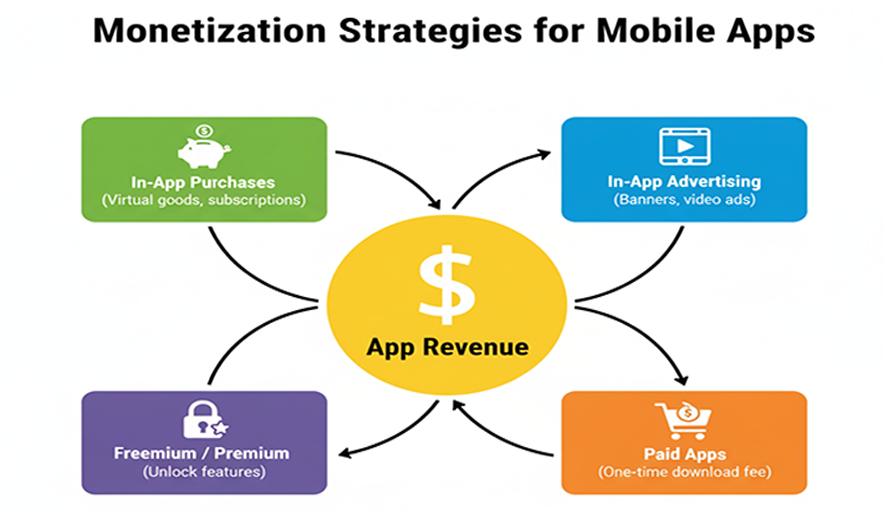
Monetization Strategies for Mobile Apps
There are several proven ways to monetize a mobile app, and the best strategy depends on your app's purpose, target audience, and business goals. Many successful apps, especially free-to-play games, use a hybrid model that combines multiple methods to maximize revenue.
Common monetization models
-
In-app purchases (IAP): Selling virtual goods, extra features, or content from within the app.
- Best for: Games (e.g., extra lives, virtual currency), fitness (e.g., premium workout plans), and social apps.
- Pros: High revenue potential, especially from highly engaged "whale" users.
- Cons: Users who don't spend may feel a disadvantage, potentially leading to a "pay-to-win" perception.
- Subscription model: Charging users a recurring fee for continued access to content or premium features.
- Best for: Content-heavy apps like streaming services, news apps, and productivity tools that offer ongoing value.
- Pros: Provides a steady, predictable revenue stream and encourages higher user engagement.
- Cons: Requires a constant stream of new, valuable content to justify the recurring cost.
- Best for: A wide range of apps, including productivity (Notion), language learning (Duolingo), and social platforms (LinkedIn).
- Pros: Attracts a large user base with a low barrier to entry.
- Cons: Low conversion rate from free to paid users, and the cost of supporting free users can be high.
- Best for: Free apps with a large, active user base, such as mobile games, news apps, and social platforms.
- Pros: Monetizes the large percentage of users who will never make an in-app purchase.
- Cons: Intrusive or excessive ads can degrade the user experience and drive users away.
- Best for: Niche apps that offer unique and high-quality solutions, where users are willing to pay upfront for the value.
- Pros: Provides an immediate revenue stream and offers an uninterrupted, ad-free experience.
- Cons: The upfront cost can limit the audience size and make it harder to attract downloads.
- Freemium model: Offering a basic version of the app for free, with an option to pay for premium features, an ad-free experience, or additional content.
- In-app advertising (IAA): Displaying ads within the app. Various formats exist, including rewarded videos, interstitial ads, and banner ads.
- Paid apps: Charging a one-time fee for users to download and use the app.
How to choose the right strategy
To select the best monetization strategy for your app, consider these factors:
- Your app's purpose: A casual game might be suited for a freemium model, while a high-value utility tool could justify a paid app or subscription.
- Your target audience: How willing are your users to pay? Are they more receptive to watching ads for rewards, or do they value an uninterrupted, ad-free experience?
- Your goals: Are you prioritizing a large user base or a high average revenue per user (ARPU)?
- Your competitors: Analyze how similar apps are monetizing their products and what is working for them.
